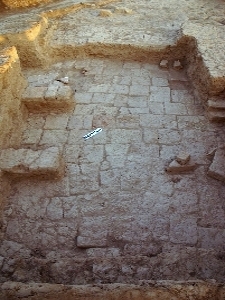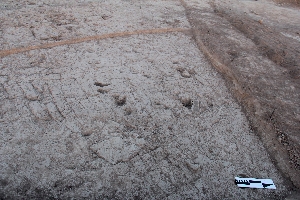Gurukly Depe
In 2010 Polish Archaeological Mission in Iran and Central Asia of the Warsaw University launched excavation project at Gurukly Depe archaeological site in Serakhs Oasis in southern Turkmenistan.
Gurukly Depe archaeological site consists of two sections:
- artificial mound (depe) covering 2.8 hectares and rising 13 metres high. It hides remains of buildings dating back to Parthian and Sassanid periods (3rd century BC – 7th century AD),
- remains of early Muslim town Gurukly Shaheri extending to the south and to the east from depe.
Depe is rectangular in shape (160 by 130 metres) and its height varies between sections. The site's morphology suggests that Gurukly Depe is a qala, fortified settlement typical for Central Asian oases consisting of houses for a few families and a residence of a landowner which usually towers over the rest of the buildings and is separated from them by a fortified wall. It seems the remains of such residence are located in the south-western section of depe which is the most elevated part of the site. This conjecture has yet to be confirmed by excavations. The function of buildings located in the lower eastern section of the site remains unknown. Two seasons of excavation research conducted in this area led to uncovering of the massive, 1.7 meters thick, wall and adjacent rooms.
The most interesting small finds unearthed on the site dating from Sassanid period include golden ring, stamp seal and terracotta form of the bodhisattva figurine. Bodhisattva is a person aiming to reach a state of Buddha, a state of enlightenment. Presence of this form indicates that Buddha believers lived in the oasis or in its neighbourhood.
We hope excavations in the next seasons will let us better understand both the architecture of the site and the main occupation of its inhabitants.
Location of the site – 36˚36΄56˝ N; E 61˚13΄37˝ E
Learn more about Gurukly Depe site:




